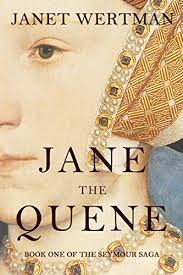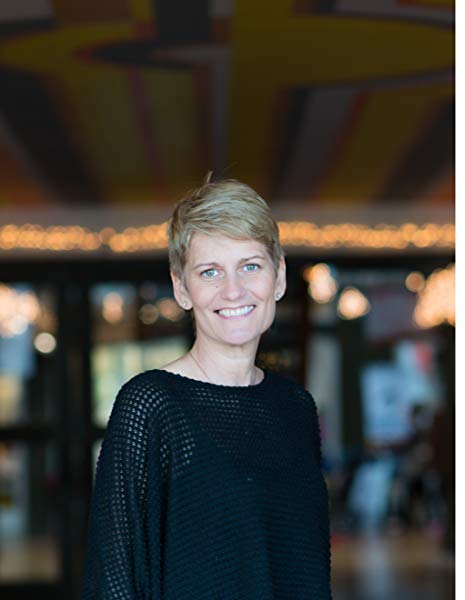December 11
Today’s Advent treat is an excerpt from Jane the Quene by historical novelist Janet Wertman.
![]()
Mid December, 1535 …
Cromwell was in the King’s study at Richmond Palace, along with the King and several artisans expert in plate and jewels. Two tables were loaded with magnificent valuables, part of the process of finalizing the Gift Roll, the list of all the presents the King would give during the New Year’s celebration at Greenwich. Every important person at court would give the King a gift and receive one in return. From gilt cups from dukes, to embroidered shirts and crafts from people of lesser ranks, each person would try to enhance their relationship with their sovereign. Then they would analyze the gifts they received to gauge their relative standing with the King.
The King was expected to be generous. It was part of the royal mystique. The people around him benefitted from his openhandedness all year long – small gifts were a constant – but at Christmas time the process was formalized to include everyone in the royal largesse. Cromwell had already prepared a draft with his suggestions, which would get most of the gifts out of the way quickly. The ones for the men mostly involved plate – chalices, flagons, serving pieces – while women, for the most part, received jewels. The size and value of each gift was based primarily on the recipient’s rank, a system that minimized resentment. The King approved every gift, and some he insisted on choosing himself. He also specified their value. Cromwell smiled to himself. The world thought him greedy – everyone blamed him if their gifts weren’t as rich as they’d hoped – but it was all the King, whose ostentatious generosity hid a private parsimony.
“May I suggest these for the Queen?” said the royal jeweler. He held a tray with polished gemstones, including five stunning diamonds mounted into the shape of a heart. “Or perhaps these golden buttons.”
The King shook his head dismissively but leaned forward to examine the tray. With one hand he picked out two heavy gold bracelets with diamonds and pearls, then with the other he selected a fine emerald. “These will be for Mistress Jane,” he said with a broad smile. “But hold them aside; I will give them to her privately.”
Cromwell made a note on his list as a servant came to collect and file the treasures.
Henry pointed to a dish of pearls. “Do you have any a little smaller? I want to give each of the Queen’s ladies three of them to sew into their hoods or dresses. Or perhaps five would be better. Cromwell?”
“Either would be most generous, Your Majesty.”
“If they are small enough, I will make it five. For all seven attendants.”
“Actually eight, Sire, by my list. Unless you are not including Mistress Jane because of her other gifts.”
Henry frowned. “No, I do not want Mistress Jane singled out. Make it four each.” He glanced over at the silversmith who held a tray of serving pieces. “Ah, you, let me see those wine flagons. Yes, that’s more like it. And those carved basins and ewers. Where are the pieces from Sir William Compton’s estate? The gilt plate. The Queen shall have some of those.”
“Yes, Your Majesty.”
Cromwell stifled a smirk. In previous years, the King had poured on the romance with Anne Boleyn. In 1529 he had given her nineteen diamonds for her head, in recognition of how she wove jewels into her long hair when she wanted to make a special impact. He had also given her two bracelets set with ten diamonds and eight pearls; two diamonds on two hearts for her head; twenty-one rubies artfully arranged into gold shaped like a rose; two borders of cloth of gold for the sleeves of a new gown, trimmed with ten diamonds and eight pearls…yet now he gave her plate. Yes, it helped her achieve the magnificence expected from a queen, but it was so much less personal.
Indeed, Henry’s attitude toward Anne Boleyn had altered. Where he had once been the gallant knight completely focused on his lady, he was now the bored husband wanting little to do with his wife. Over-explaining when she asked questions. Offhand where he had once been enthusiastic. Now her fits of pique annoyed him, as well they should. And he spent more time with people who disliked her. A new coalition was forming. Edward Seymour was becoming a confidant of the King, and Seymour’s friends were tagging along. Cromwell, of course, was careful to remain one of those friends. It was not terribly hard. They had a history together after all, and had always been on good terms.
“But those crystal-handled forks – yes, that set – put those aside for Edward Seymour and his wife.”
Seymour was definitely on the rise. Thanks to his sister.
“Oh, and that gold chalice. Cromwell, that is perfect for you.”
Cromwell blinked to avoid showing any reaction. “Sire, I believe that was my gift to you last year.”
Henry’s eyes narrowed and he turned back to the artisan. “Then give that one to the Duke of Norfolk. Find me another one, a larger one, for Cromwell.”
Cromwell bowed. He prayed the gifts would be given together so the good Duke would see that he had been snubbed.
![]()
Janet Ambrosi Wertman grew up within walking distance of three bookstores and a library on Manhattan's Upper West Side - and she visited all of them regularly. Her grandfather was an antiquarian bookdealer who taught her that there would always be a market for quirky, interesting books. He was the one who persuaded Janet's parents to send her to the French school where she was taught to aspire to long (grammatically correct) sentences as the hallmark of a skillful writer. She lived that lesson until she got to Barnard College. Short sentences were the rule there. She complied. She reached a happy medium when she got to law school - complicated sentences alternating with short ones in a happy mix.
Janet spent fifteen years as a corporate lawyer in New York, she even got to do a little writing on the side (she co-authored The Executive Compensation Answer Book, which was published by Panel Publishers back in 1991). But when her first and second children were born, she decided to change her lifestyle. She and her husband transformed their lives in 1997, moving to Los Angeles and changing careers. Janet became a grantwriter (and will tell anyone who will listen that the grants she's written have resulted in more than $20 million for the amazing non-profits she is proud to represent) and took up writing fiction.
There was never any question about the topic of the fiction: Janet has harbored a passion for the Tudor Kings and Queens since her parents let her stay up late to watch the televised Masterpiece Theatre series (both The Six Wives of Henry VIII and Elizabeth R) when she was *cough* eight years old. One of the highlights of Janet's youth was being allowed to visit the Pierpont Morgan Library on a day when it was closed to the public and examine (though not touch!) books from Queen Elizabeth's personal library and actual letters that the young Princess Elizabeth (technically Lady Elizabeth...) had written.
Janet is thrilled to have released the first two books in The Seymour Saga trilogy. Jane the Quene, which tells the story of Jane Seymour’s marriage to Henry VIII, was published in 2016; and The Path to Somerset, which chronicles Edward Seymour’s rise after Jane’s death to become Lord Protector of England and Duke of Somerset (taking us right through Henry’s crazy years) was just released this year. They will be joined in 2020 by The Boy King, which will cover the reign of Jane’s son, Edward VI, and the string of betrayals he suffered.

